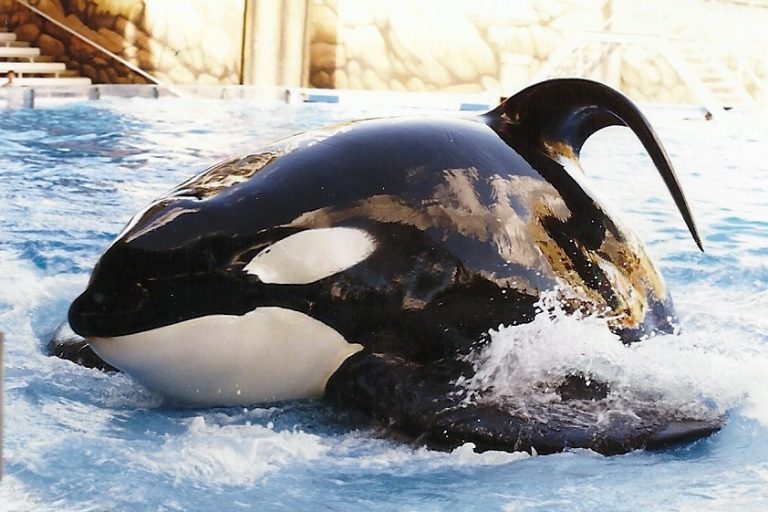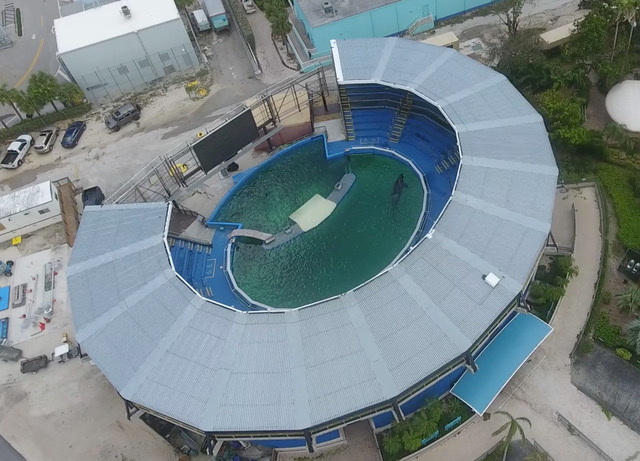SeaWorld Orlando, a prominent marine theme park in the USA, attracts over 4 million visitors annually. It combines thrilling family-friendly entertainment with its renowned aquarium, featuring 8 roller coasters, 2 water rides, and various animal encounters that entertain guests of all ages. As visitors stroll through the park, they are greeted by awe-inspiring displays, such as orcas leaping out of the water, dolphins swimming alongside divers, and seals performing tricks. The park staff often portray this environment as a positive, happy place, where animals and humans coexist in harmony. However, beneath the surface, there are troubling issues that go unnoticed by many.
Orcas, also known as killer whales, are large, highly intelligent marine mammals that can dive as deep as 324 feet below sea level and swim at speeds of up to 56 km/h. When we consider these incredible capabilities, it's clear that the tanks at SeaWorld, which are only about 34 feet deep, are nowhere near suitable for meeting the orcas' natural needs. The confined space prevents them from achieving their natural swimming speeds and limits their ability to express their instincts and behaviors in a meaningful way. Since 1961, over 166 orcas have been captured from the wild for captivity, and at least 180 have died in captivity, not including the miscarried ones. These statistics paint a bleak picture of the toll captivity takes on these majestic animals.
One of the most visible signs of the negative effects of captivity is the condition of the orcas' dorsal fins. In the wild, orcas' dorsal fins stand tall and straight, but in captivity, many orcas suffer from collapsed dorsal fins. This is not just an aesthetic issue; it's a sign of physical distress and poor health. Additionally, orcas in captivity often experience severe dental problems, as they chew on bars, walls, or other structures out of frustration and boredom. To “treat” these issues, SeaWorld has resorted to drilling their teeth and leaving them unfilled, a practice that fails to address the underlying cause of the problem and can lead to further health complications.
Tragically, there have been instances where orcas have killed humans, often due to frustration and aggression resulting from the unnatural conditions of captivity. While these incidents are sometimes portrayed as the orcas being "dangerous," it's important to recognize that the animals' violent behavior is largely a consequence of the stress, isolation, and confinement they endure. They are simply reacting to the unnatural conditions imposed upon them. The responsibility lies not with the orcas, but with the trainers and the system that forces these intelligent creatures to engage in unnatural behaviors for entertainment.
The plight of orcas in captivity is a tragic reminder of the ethical concerns surrounding the treatment of marine mammals for profit and entertainment. While SeaWorld Orlando may continue to be a popular destination for visitors, it is crucial to acknowledge the harm caused to these majestic creatures in the name of spectacle and profit.

Tilikum
Tilikum, often referred to as Tilly, was a male orca who became notorious for being involved in the deaths of three people: Keltie Byrne, Daniel Dukes, and Dawn Brancheau. Captured off the coast of Iceland, Tilikum was sent to Sealand of the Pacific, a now-closed marine park near Victoria, Canada. There, he was frequently harassed by other orcas in his tank. After killing trainer Keltie Byrne, Tilikum was moved to SeaWorld Orlando, where he would go on to kill two more people. Following the tragic death of Dawn Brancheau in 2010, Tilikum was largely isolated from both trainers and other orcas. As the largest male orca in captivity, he became easily recognizable by his collapsed dorsal fin. Tilikum's life came to an end in January 2017, after battling a persistent bacterial infection that proved resistant to treatment.

Lolita - The Lonliest Orca
Lolita, also known as Tokitae, the final surviving orca of the Penn Cove capture of 1970, died on August 18, 2023. A Southern Resident orca from L-pod, Lolita had been living in a substandard tank (one that violates Animal Welfare Act standards) at Miami Seaquarium for 53 years. She had not seen a fellow orca since 1980, when her tankmate Hugo died from self-inflicted wounds. Her current dolphin tankmates routinely show aggression. During Hurricane Irma in 2017, Dolphin Project obtained video footage showing that Lolita had been left in her tank unprotected, to ride out the storm. As a Southern Resident orca, her family members are protected under the Endangered Species Act, yet she was afforded no protections under the law. When played the calls of her pod, Lolita still recognized and responded to the sounds.